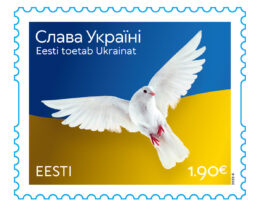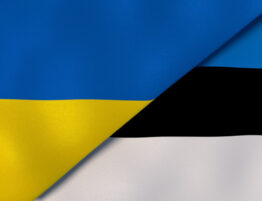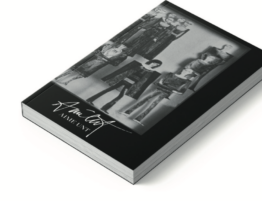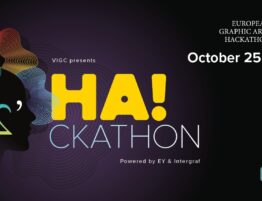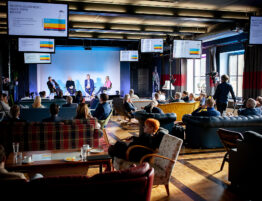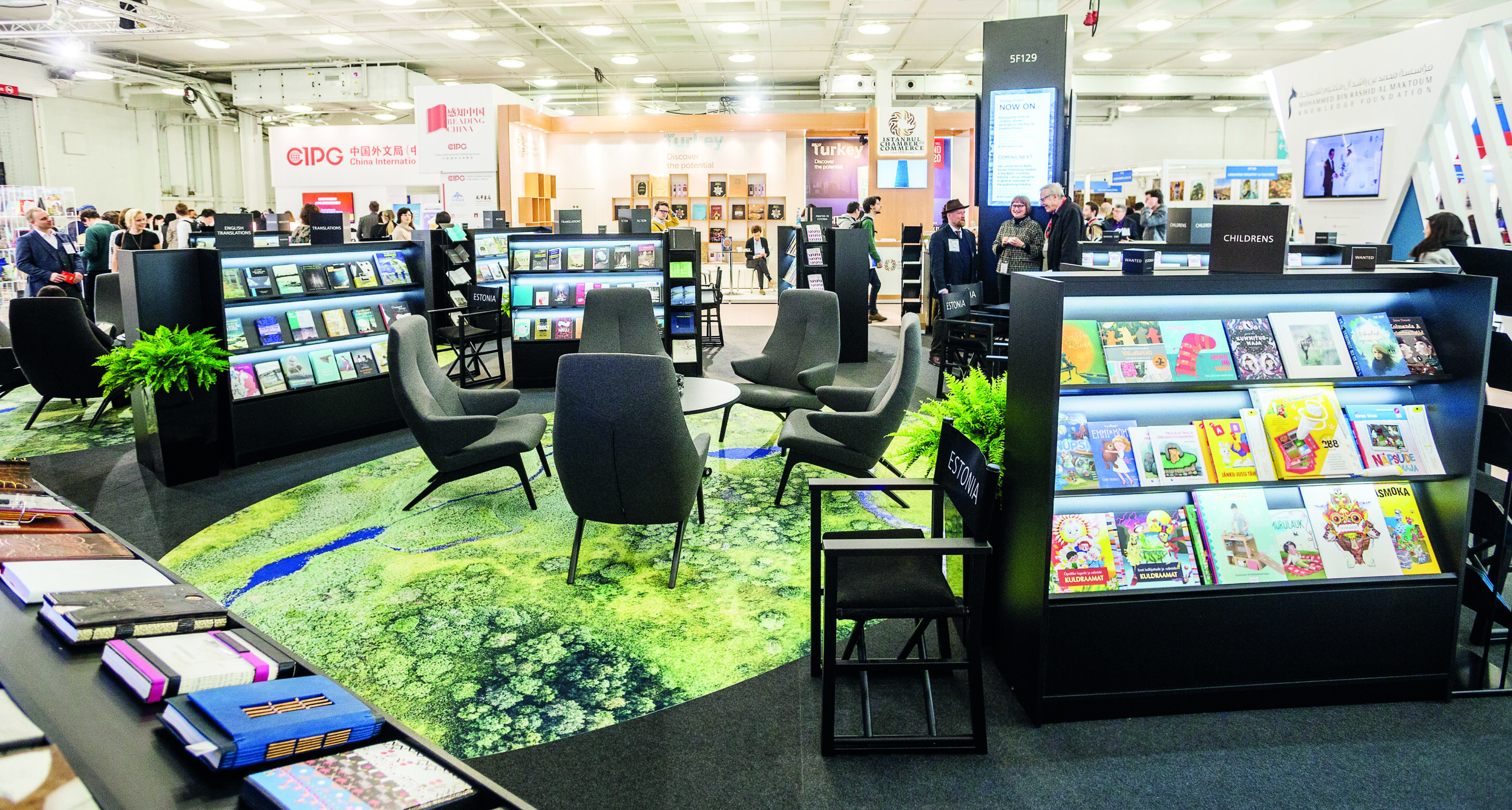
Photo: The Estonian Publishers’ Association
Estonia has several printing houses that print books and they all have long-term collaboration with several book publishers.
Printing house Greif (operating since 1992) has been a sound choice among Estonian publishers for several years. Greif’s main principle is: “An exquisite book is a work of art.” Several large and small printing houses in Southern Estonia, near Tartu, print books as well as commercial prints. According to Chairman of the Board Kalle Rannu, there are several reasons for choosing printing house Greif. “You can look at it any way you want, but the primary consideration is price, while service quality and print and bookbinding quality are also significant,” says Rannu. “Four or five large book printing houses operate in Estonia and everyone has more or less established their clientele. When we operate in foreign markets, we compete with one another and are also in competition with Latvian printing houses.”“In principle, a book is not anything innovative, it has been in a rectangle shape and made of paper since Gutenberg’s time. We have the ability to change the paper or the pressing, add foil, attach UV varnish and spot varnish, but it still doesn’t make the book spherical,” he adds.
Book printer Pakett (operating since 1994) in Mustamäe, Tallinn, ascertains in their self-introduction that “a book enthusiast never feels boredom or lies alone in bed”. Pakett creates both paperback and hardcover books in addition to more complex works that require post-production and intense handicraft. CEO of Pakett printing house Sven-Erik Moorlat highlights Pakett’s strengths: their flexibility and their ability to offer handicraft solutions. Copies in the printing house fluctuate between a few hundred and a few thousand books. Pakett also assists self-publishers in the publication of books.
Tallinn Book Printers has been in business in Mustamäe since 1985 and, as its name states, they have always been there for Estonian clients. Their long-term experience is in fact their greatest advantage. Book-making is a sophisticated process that requires knowledge of technology and materials in addition to the wealth of knowledge gathered over the years, which they can then apply in their everyday work. Additionally, a loyal client base accumulates over several years. “If a designer asks, ‘can we do it like this?’ then professional curiosity takes over – can we?” reports Maarika Solovjov, Technologist at Tallinn Book Printers.
Print Best printing house has provided high-quality and esteemed printing services since 1997. This printing house is located in Viljandi, Central Estonia. Marketing director Kaarel Ausmees states that they are a book, catalogue and magazine printing house and their main export is books, with an export capacity of more than 90% of turnover. Print Best is the best printing partner thanks to a combination of nearly a quarter of a century of experience and the best available equipment. New investments in printing and post-production equipment allow us to say that we are the most modern printing house in the entire region. They do not wish to publish books themselves but have collaboration partners across Europe. In addition to mainland Europe (France, Germany, the Netherlands, Poland, Latvia, Scandinavia, etc.), books from the printing house in Viljandi are also sent to the United Kingdom, Ireland, Iceland and somewhat to the United States.
According to Rannu, every large Estonian book printer uses machinery comparable to that of Greif. Nevertheless, they have one distinct feature – since April 2019, they have applied Prinect Technology. Prior technical and quality control meant that the quality of prints was assessed after every 500 or 1000 pages. The control device is now inside the machine and monitors quality in real time. This is particularly essential for art books. The constant inspection taking place inside the machine means that the printing machine is able to correct itself whenever it detects a misalignment. One significant innovation is that there is no need for inspections in order to check print quality; therefore, no low-quality prints are created, which saves both money and paper.
Carbon footprint is a significant metric

From February, Greif printing house will provide one-fifth of all energy via solar-powered energy. The 200-kilowatt solar station will completely power the entire printing house whenever it is sunny – other printing houses do not possess this type of solar station. For their sustainable and environmentally aware behaviour, Greif won the 2019 Kodak environmental award entitled SONORA Plate Green Leaf Award.
Maarika Solovjov states that Tallinn Book Printers has been audited several times for environmental sustainability on the basis of both European and US standards.
Dynamics of titles and copies
Print run figures of Estonian book printing houses have declined every year, but the numbers of various titles have increased. More books are ordered in paperback, which are easier to take on the go, read on a train or a plane and subsequently leave on some station’s bookshelf. An art book, however, has to be printed on thicker paper that isn’t translucent and also requires stronger binding. At Tallinn Book Printers, whose motto is “books that bind”, more than half of their orders are hardcover books, more than one-third are paperback adhesive bindings and everything else is staple binding and comb binding. Many digital printing houses in Estonia print small editions; they are able to produce several dozen books with the assistance of digital technology. Grano Digital is the most prominent among them.
Print Best OÜ’s production facility specialises in producing four and one colour hardcover and paperback books as well as catalogues and magazines in staple binding. Additionally, they manufacture a high volume of maps, centrefolds and other large format prints.
Close relationships with clients are as important as price
There are many books, and communication with the client is often more important than the price. The possibility to come to the printing house and the belief that the result will be up to expectations are particularly important. We frequently get new clients thanks to the recommendation of an existing customer.
We can find the best solutions for all of our clients together, but the marketing director is mainly responsible for key clients. “We have a specific key client strategy, which is our business wisdom, and I can add that we wish to be the key partner in any collaboration,” states Ausmees. Print Best printing house works with key clients year in year out, which results in many meetings – in 2019, we travelled 80 times by plane in order to get the desired result. It is necessary to take part in trade expositions and work unremittingly in order to gain clients, specifically export clients. So called ‘cold calls’ for services are seldom made; 90% of the workload is established by a long-term plan.
Great work is rewarded with recognition
Regarding Tallinn Book Printers, Maarika Solovjov brings forth the prizes handed out once a year in the National Library of Estonia for the most beautiful Estonian books. Even though most of the focus is on the designers and the publishers, this award is also meant for the printing house because if a wonderful idea is poorly conducted, the resulting book is not beautiful. “Over the years, we have received many of these awards and that is the most significant recognition for us,” states Maarika Solovjov. Additionally, Tallinn Book Printers has received comparable awards from abroad – Switzerland, Finland, Sweden and Russia. Awards are also won by their client, Lugemik, at the NY Art Book Fair exhibit that takes place in the Museum of Modern Art (MoMA).
Print Best printing house is an acclaimed printing house and a long-term partner to several book publishers in both Estonia and Scandinavia. The prestigious Gourmand Award and the title of ‘Best in the World’ in cookbook printing houses are now included among the acknowledgements. Print Best received the award for printing the book entitled Mjödboken (publisher: Grenadine, 2019, Sweden).
This article is originally published in the Printed in Estonia 2020 magazine.
Text by Epp Alatalu.


